Home>Garden Essentials>How Is Crop Rotation Sustainable


Garden Essentials
How Is Crop Rotation Sustainable
Modified: March 16, 2024
Discover the benefits of incorporating crop rotation into your garden. Enhance soil health, reduce pest and disease issues, and promote sustainable gardening practices.
(Many of the links in this article redirect to a specific reviewed product. Your purchase of these products through affiliate links helps to generate commission for Storables.com, at no extra cost. Learn more)
Introduction
Crop rotation is a time-tested and sustainable agricultural practice that involves the sequential planting of different crops on the same land over a period of time. It has been practiced by farmers for centuries, dating back to the ancient civilizations of Egypt and Mesopotamia. The principle behind crop rotation is to promote soil health, reduce the risks of pests and diseases, manage nutrients effectively, suppress weeds, and ultimately increase crop yields.
So, how does crop rotation work? The concept is quite simple. Instead of growing the same crop year after year, farmers rotate the crops they plant on their land, typically in a specific sequence. For example, they may plant corn one year, followed by soybeans the next year, and then rotate to wheat in subsequent years. This rotation helps to break the cycle of pests and diseases that may target a specific crop, as different crops have varying nutrient requirements and attract different types of pests.
Crop rotation offers numerous benefits, making it an essential tool for sustainable agriculture. Let’s delve deeper into these benefits.
Key Takeaways:
- Crop rotation is like a superhero for farms! It helps keep the soil healthy, fights off pests and diseases, and makes sure crops have all the nutrients they need to grow big and strong. Plus, it’s good for the environment too!
- By mixing up the crops they plant, farmers can naturally control weeds, reduce the need for chemicals, and help the environment. It’s like giving the farm a special power to keep everything in balance and thriving!
Read more: What Was Crop Rotation?
What is crop rotation?
Crop rotation is a practice in which different crops are planted in a specific sequence on the same piece of land. The aim is to improve soil health, increase crop yields, and reduce the reliance on chemical inputs. It is based on the principle that different crops have different nutrient requirements and are susceptible to different pests and diseases.
There are several different types of crop rotation systems that farmers can implement, depending on their specific goals and the crops they grow. Some common rotation systems include the traditional three-field rotation, four-field rotation, and more complex multi-year rotations.
In the traditional three-field rotation, the farmer divides the land into three main areas. One area is planted with a cereal crop such as wheat or barley, another area is planted with a legume crop like peas or beans, and the third area is left fallow or planted with a nitrogen-fixing crop like clover. The following year, the crops are rotated, with each area growing a different type of crop.
The four-field rotation system is similar, but instead of leaving one field fallow, all fields are planted with a different crop each year. This system allows for a more continuous cropping cycle, providing more opportunities for the farmer to improve soil fertility and health.
Multi-year rotations are more complex and involve rotating crops over longer periods, typically three to seven years. This allows for a greater variety of crops to be grown, providing more benefits in terms of pest and disease management, nutrient cycling, and soil improvement.
Regardless of the specific rotation system used, the fundamental idea is to avoid planting the same crop in the same location year after year. This helps break the cycle of pests and diseases that can build up over time and deplete the soil of essential nutrients.
In addition to improving soil health and reducing pest problems, crop rotation also offers other advantages. It can help control weeds by disrupting their life cycles and depriving them of their preferred host crops. It can also help manage nutrient levels more efficiently by alternating crops with different nutrient demands, reducing the need for excessive fertilizer use.
In summary, crop rotation is a sustainable farming practice that involves the systematic planting of different crops in a specific sequence. It promotes soil health, reduces pest and disease pressure, optimizes nutrient management, and enhances overall crop productivity. By implementing crop rotation, farmers can achieve more sustainable and environmentally friendly agricultural systems.
Benefits of Crop Rotation
Crop rotation offers numerous benefits to farmers and the environment. By diversifying the crops grown on their land and altering the planting sequence, farmers can reap the following advantages:
Improved Soil Health
One of the key benefits of crop rotation is its positive impact on soil health. Different crops have different root structures, which help improve soil structure and increase organic matter content. For example, deep-rooted crops like alfalfa can penetrate deep into the soil, loosening compacted layers and improving drainage. Leguminous crops, such as peas or soybeans, have the ability to fix nitrogen from the atmosphere, enriching the soil with this essential nutrient. Overall, crop rotation helps prevent soil erosion, enhances water-holding capacity, and promotes the activity of beneficial soil microorganisms.
Pest and Disease Control
Crop rotation is an effective strategy for managing pests and diseases. By rotating crops with different susceptibility to specific pests and diseases, farmers can disrupt the life cycles of these organisms and reduce their populations. For instance, a farmer can avoid planting the same crop that is prone to a particular pest in the same field for consecutive years, preventing the buildup of pest populations and reducing the need for chemical pesticides. Additionally, some crops have natural mechanisms to repel or deter pests, and rotating these crops can provide a natural barrier against infestations.
Read more: What Is Crop Rotation Strip Cropping
Nutrient Management
Crop rotation allows for efficient nutrient management. Different crops have varying nutrient requirements, and by rotating crops, farmers can avoid depleting specific nutrients from the soil. For example, nitrogen-fixing legumes can replenish nitrogen levels in the soil, reducing the need for synthetic fertilizers. Additionally, alternating crops with deep root systems or taproots can help break up compacted soil layers and access nutrients that may be otherwise inaccessible to shallow-rooted crops. This sustainable nutrient management helps maintain soil fertility and reduces the risk of nutrient imbalances.
Weed Suppression
Crop rotation can naturally suppress weed populations. By planting crops with different growth habits and canopy structures, farmers can effectively compete with weeds for sunlight, water, and nutrients. Crops with dense foliage and rapid growth can shade out weeds, preventing their establishment and growth. Additionally, rotating crops can disrupt the life cycles of weed species, as certain weeds may be more prevalent in monoculture systems. By breaking this cycle, farmers can reduce the need for herbicides and minimize the impact of weeds on crop yields.
Increased Crop Yields
Crop rotation ultimately leads to increased crop yields. By optimizing soil health, managing pests and diseases, balancing nutrients, and suppressing weeds, farmers can create a favorable environment for crop growth and development. Healthy soils provide optimal growing conditions, while pest and disease control minimize yield losses. Additionally, nutrient management ensures that crops have sufficient access to essential nutrients, promoting vigorous growth and higher yields. Ultimately, with the implementation of crop rotation, farmers can achieve consistently better crop performance and improved overall farm productivity.
By reaping these benefits, farmers can adopt more sustainable agricultural practices and reduce their reliance on synthetic inputs, benefiting both their livelihoods and the environment.
Improved Soil Health
One of the primary benefits of crop rotation is its positive impact on soil health. Soil is the foundation of agriculture, providing the essential nutrients and physical support necessary for plant growth. By implementing crop rotation, farmers can improve the quality and fertility of their soil in several ways.
Firstly, crop rotation helps break the cycle of pests and diseases that can build up over time with continuous monoculture. When the same crop is grown year after year, pests and diseases that target that specific crop can establish themselves and thrive in the soil. By rotating crops, farmers can disrupt this cycle, as different crops often have different pest and disease vulnerabilities. This aids in reducing the pest and disease pressure on the soil, minimizing the need for chemical inputs.
Furthermore, different crops have varying root structures, which can contribute to improved soil structure and reduced compaction. Some crops, like legumes, have deep root systems that penetrate the soil, breaking up compacted layers and improving drainage. This allows for better water infiltration and root penetration of the soil, leading to improved nutrient availability for plants. Additionally, the organic matter produced by different crop residues benefits the soil by increasing its water-holding capacity and enhancing nutrient cycling.
Crop rotation also plays a crucial role in maintaining soil fertility. Different crops have different nutrient requirements, and by alternating crops, farmers can avoid depleting specific nutrients from the soil. For example, leguminous crops like peas or beans have the ability to fix atmospheric nitrogen through a symbiotic relationship with nitrogen-fixing bacteria. When these crops are incorporated into the rotation, they help enrich the soil with nitrogen, reducing the need for synthetic fertilizers. This not only benefits the soil by replenishing a vital nutrient but also reduces the risk of nutrient imbalances that can occur with continuous crop production.
In addition to managing pests, diseases, and nutrients, crop rotation also improves soil microbial activity. Different crops support the growth of diverse microbial communities in the soil, including beneficial bacteria, fungi, and other microorganisms. These microbes play critical roles in nutrient cycling, organic matter decomposition, and disease suppression. By providing a varied and diverse habitat for these microorganisms through crop rotation, farmers can enhance the overall health and functionality of their soil ecosystem.
Overall, improved soil health is a cornerstone of sustainable agriculture, and crop rotation is a powerful tool for achieving this goal. By diversifying the crops grown and altering the planting sequence, farmers can enhance soil structure, promote nutrient cycling, reduce pest and disease pressure, and foster a healthy and thriving soil ecosystem. A healthy soil provides a solid foundation for crop growth, ultimately leading to increased yields and greater long-term productivity.
Read more: What Are Cover Crops And Crop Rotation?
Pest and Disease Control
Crop rotation is a highly effective strategy for managing pests and diseases in agriculture. By rotating crops, farmers can disrupt the life cycles of pests and minimize the risk of disease outbreaks. This approach reduces the reliance on chemical pesticides and promotes a more sustainable and environmentally friendly approach to pest and disease control.
When the same crop is planted year after year in the same field, pests and diseases that specifically target that crop can thrive and multiply. This is because the constant presence of their preferred host provides a continuous food source and favorable environment for their reproduction. By rotating crops, farmers can break this cycle and reduce the buildup of pests and diseases.
Different crops have varying susceptibilities and tolerances to pests and diseases. By rotating crops, farmers can avoid planting the same crop that is susceptible to a particular pest or disease in the same field for consecutive years. This makes it challenging for pests and diseases to establish and spread, as their preferred hosts are not readily available.
Crop rotation also disrupts the populations of pests and diseases by altering their environment and food sources. Pests are often attracted to specific crops or have a preference for certain plant species. By rotating crops, farmers can create an unfavorable environment for pests, making it harder for them to locate and attack their preferred hosts. This serves as a natural pest control method, reducing the need for chemical pesticides.
Moreover, some crops have natural defense mechanisms against pests and diseases. By incorporating these crops into the rotation, farmers can take advantage of these natural defenses. For example, some crops release chemical compounds that repel or deter pests, while others may attract beneficial insects that feed on pests. Incorporating such crops into the rotation can provide a layer of protection against pest and disease infestations.
Furthermore, when pests and diseases are present in a field, rotating to a different crop disrupts the lifecycle of these organisms. Different crops have different growth stages and lengths, which can interrupt the development and reproduction of pests and diseases. This reduces their impact on the overall crop yield and minimizes the need for pesticide applications.
Crop rotation also facilitates the reduction of chemical pesticide use. By minimizing the need for pesticides, farmers can lower the risk of environmental contamination and mitigate the potential negative effects on non-target organisms, such as beneficial insects and pollinators.
Overall, crop rotation serves as a valuable tool for pest and disease control in agriculture. By diversifying the crops planted and preventing the continuous presence of susceptible hosts, farmers can minimize pest pressure, reduce disease outbreaks, and achieve more sustainable pest management practices. By adopting crop rotation, farmers can not only protect their crops but also contribute to the preservation of biodiversity and the health of the surrounding ecosystems.
Nutrient Management
Crop rotation plays a vital role in effective nutrient management in agricultural systems. Different crops have varied nutrient requirements, and by rotating crops, farmers can optimize nutrient utilization, reduce nutrient imbalances, and minimize the reliance on synthetic fertilizers.
When the same crop is grown continuously in a field, it depletes specific nutrients from the soil, leading to nutrient imbalances. This can hinder plant growth, reduce yield potential, and negatively impact the overall health of the soil. By implementing crop rotation, farmers can avoid these imbalances by alternating crops with different nutrient demands.
One of the key benefits of crop rotation is the inclusion of leguminous crops, such as peas, beans, and clover. Legumes have the unique ability to form a symbiotic relationship with nitrogen-fixing bacteria, allowing them to convert atmospheric nitrogen into a usable form for plants. By incorporating legumes into the rotation, farmers can naturally replenish nitrogen levels in the soil, reducing the need for synthetic nitrogen fertilizers. This not only cuts down on input costs but also helps mitigate the environmental impact of excess nitrogen runoff into waterways.
Besides nitrogen, other essential nutrients like phosphorus, potassium, and micronutrients can be managed through crop rotation. Different crops have different nutrient uptake patterns, with some crops being more efficient at extracting certain nutrients from the soil. By diversifying the crop rotation, farmers can balance nutrient uptake and uptake efficiency, ensuring that the soil remains adequately supplied with essential nutrients throughout the rotation cycle.
Crop rotation can also help manage soil pH levels. Certain crops have specific pH preferences, and by alternating between acidic and alkaline-loving crops, farmers can mitigate soil pH imbalances. For example, growing crops like potatoes or tomatoes in one season, which prefer acidic soils, followed by brassicas like cabbage or broccoli in the next season, which prefer alkaline soils, can help maintain a more neutral pH level over time.
Another aspect of nutrient management in crop rotation is the efficient utilization of organic matter. When crop residues are incorporated into the soil, they decompose and release nutrients that can be utilized by subsequent crops. By rotating crops, farmers can carefully manage the incorporation of crop residues and organic matter, ensuring a steady supply of nutrients for future plantings. This improves soil fertility, enhances nutrient cycling, and reduces the reliance on external inputs.
By implementing nutrient management practices through crop rotation, farmers can optimize nutrient availability, enhance soil fertility, and reduce the potential negative impacts associated with excessive fertilizer use. It can lead to healthier crops, increased yields, and a more resilient and sustainable agricultural system overall.
Weed Suppression
Crop rotation is an effective strategy for naturally suppressing weeds in agricultural fields. Weeds are unwanted plants that compete with cultivated crops for resources such as sunlight, water, and nutrients. By implementing crop rotation, farmers can disrupt the life cycles of weeds, reduce weed populations, and minimize the need for herbicides.
One of the primary ways in which crop rotation helps suppress weeds is through competition. Different crops have different growth habits, canopy structures, and root architectures. By rotating crops with varying characteristics, farmers can create challenging environments for weeds to establish and grow. Crops with dense foliage and rapid growth can shade out weeds, depriving them of sunlight and inhibiting their growth. This competition for resources can suppress weed growth, giving crops a competitive advantage.
Crop rotation also breaks the weed life cycle by interrupting weed seed production and spread. Some weed species have specific preferences for certain crops and may be more prevalent in monoculture systems. By rotating crops, farmers can effectively disrupt the life cycle of these weeds. Different crops may require different cultivation techniques or timings, such as varying planting depths, row spacing, or tillage practices. These differences can hinder the germination, growth, and spread of weeds, reducing weed populations over time.
Furthermore, certain crops exhibit allelopathic properties, meaning they release chemical compounds that inhibit the growth and germination of other plant species, including weeds. By incorporating these crops into the rotation, farmers can utilize their natural weed-suppressing abilities. For instance, crops like rye or buckwheat can release allelopathic chemicals that help control weed growth, reducing the need for herbicides.
Crop rotation can also help manage weeds that have specific life cycles or preferences for certain soil conditions. For instance, some weed species are annuals, while others are perennials. By incorporating perennial crops into the rotation, farmers can disrupt the life cycles of annual weeds that rely on continuous seed germination and prevent the establishment of perennial weeds that require long-term persistence in the same field.
It is worth noting that effective weed suppression through crop rotation requires careful planning and consideration of the specific weed species and their characteristics. Different weed species may have different life cycles, seed viability, and resistance to certain management methods. Therefore, farmers need to tailor their crop rotation strategies accordingly, selecting crops that are effective in suppressing the specific weed species present in their fields.
By utilizing crop rotation as a means of weed suppression, farmers can reduce the reliance on herbicides and minimize the development of herbicide resistance among weed populations. This not only promotes more sustainable and environmentally friendly farming practices but also helps reduce production costs and maintain the long-term productivity and profitability of agricultural systems.
Increased Crop Yields
Crop rotation is a proven method for increasing crop yields and overall farm productivity. By diversifying the crops grown and altering the planting sequence, farmers can create a favorable environment for plant growth, optimize nutrient availability, reduce pest and disease pressure, and achieve higher yields.
One of the key ways in which crop rotation enhances crop yields is by improving soil health. Different crops have varied root structures and nutrient requirements. By rotating crops, farmers can improve soil structure, increase organic matter content, and enhance nutrient cycling. This leads to healthier soils with improved water-holding capacity, better nutrient availability, and optimal growing conditions for crops. Healthy soils provide a solid foundation for plant growth, facilitating vigorous root development and nutrient uptake, which ultimately translates into increased yields.
In addition to soil health, crop rotation also helps manage pests and diseases. When the same crop is planted continuously in a field, pests and diseases that specifically target that crop can establish themselves and multiply rapidly. By rotating crops, farmers can disrupt the life cycles of these organisms, reducing their populations and minimizing the risk of significant yield losses. This results in healthier crops with reduced disease incidence and pest damage, allowing for increased yields.
Nutrient management is another critical aspect of crop rotation that contributes to higher crop yields. Different crops have specific nutrient requirements. By alternating crops with different nutrient demands, farmers can optimize nutrient availability in the soil. For example, nitrogen-fixing leguminous crops help replenish nitrogen levels, reducing the need for synthetic fertilizers. Balancing nutrient uptake and reducing nutrient imbalances through crop rotation ensures that crops have access to the nutrients they need for optimal growth and development, leading to increased yields.
Weed control is another factor that affects crop yields, and crop rotation can help in this regard. Weeds compete with crops for essential resources such as sunlight, water, and nutrients. By rotating crops, farmers can disrupt the life cycles of weeds and implement cultivation practices that reduce weed populations. This reduces competition between crops and weeds, allowing crops to grow more efficiently and without hindrance. As a result, crop yields are maximized.
The combination of improved soil health, reduced pests and diseases, optimized nutrient management, and effective weed control provided by crop rotation creates the conditions necessary for plants to thrive. Healthy, well-nourished crops with reduced pest and weed pressure can allocate their energy towards growth and reproductive development, resulting in increased yields and improved crop quality.
It is important to note that the success of crop rotation in increasing crop yields depends on several factors, such as the specific rotation scheme, the selection of crops, and appropriate management practices. Farmers must carefully plan and implement crop rotation strategies that take into account the specific agroecological conditions, crop requirements, and market demands to maximize its benefits.
By adopting crop rotation as a sustainable farming practice, farmers can achieve more consistent and higher crop yields, ensuring long-term profitability and a secure food supply.
Read more: What Was The Three-Crop Rotation?
Sustainable Agricultural Practices
Crop rotation is considered a fundamental component of sustainable agricultural practices. It offers numerous benefits that help farmers maintain the long-term productivity and environmental integrity of their land. Implementing crop rotation aligns with the principles of sustainability by promoting soil health, reducing chemical inputs, conserving resources, and enhancing biodiversity.
One of the key aspects of sustainability is the preservation and improvement of soil health. Healthy soil is the foundation of agriculture, providing the essential nutrients and physical support necessary for plant growth. Crop rotation plays a crucial role in maintaining soil fertility and structure. By diversifying the crops grown and incorporating practices such as cover cropping, farmers can enhance soil organic matter content, improve water-holding capacity, increase nutrient cycling, and reduce soil erosion. Healthy soils lead to more resilient and productive agricultural systems, ensuring food security for future generations.
A sustainable approach to agriculture prioritizes the reduction of chemical inputs. Crop rotation allows farmers to minimize the reliance on synthetic fertilizers and pesticides. By diversifying the crops and breaking the cycle of pests and diseases, farmers can reduce the need for chemical interventions. Moreover, incorporating leguminous crops into the rotation can naturally enrich the soil with nitrogen, reducing the dependency on synthetic nitrogen fertilizers. This reduces the risk of pollution and protects the surrounding ecosystem, including waterways and beneficial insect populations.
Conserving resources is another essential aspect of sustainability. Crop rotation helps optimize resource utilization, including water and nutrients. By managing nutrients more efficiently through crop rotation, farmers can minimize nutrient losses through leaching or runoff, reducing the environmental impact. Additionally, by improving soil health and structure, crop rotation enhances water infiltration and retention, reducing irrigation needs and conserving water resources. These practices not only benefit the environment but also contribute to cost savings for farmers.
Biodiversity is a fundamental element of sustainable agriculture. By diversifying the crops grown on their land, farmers can create habitats for a variety of plant and animal species. Different crops attract different beneficial insects, birds, and pollinators, promoting biodiversity and ecological balance. This biodiversity contributes to natural pest control, reducing pest populations and the need for chemical pesticides. Moreover, by incorporating cover crops and leguminous plants into their rotation, farmers can provide additional food sources and habitats for beneficial organisms, further enhancing biodiversity on the farm.
Another important aspect of sustainable agriculture is resilience to climate change. Crop rotation can help farmers adapt to changing climate conditions. By diversifying crops, farmers can select varieties that are better suited to different weather patterns, pests, or drought resistance. Furthermore, crop rotation helps preserve soil moisture and maintain soil health, allowing crops to better withstand periods of drought or excess rainfall. This adaptability is crucial in building resilience and ensuring the long-term viability of agricultural systems.
Overall, crop rotation is a powerful tool for incorporating sustainable practices into agriculture. By diversifying crops, improving soil health, reducing chemical inputs, conserving resources, promoting biodiversity, and enhancing resilience, farmers can create more sustainable and environmentally friendly farming systems. The adoption of crop rotation contributes to the preservation of natural resources, protects the environment, and supports the sustainable production of food for present and future generations.
Environmental Benefits
Crop rotation offers significant environmental benefits, contributing to the conservation of natural resources, the reduction of greenhouse gas emissions, and the preservation of biodiversity. By implementing crop rotation as a sustainable agricultural practice, farmers can play a crucial role in protecting and preserving the environment.
Soil Conservation
Crop rotation plays a vital role in soil conservation. By diversifying the crops grown on their land, farmers can prevent soil erosion and reduce the degradation of agricultural land. Different crops have varying root structures and growth characteristics, which help improve soil structure, increase organic matter content, and enhance water-holding capacity. The incorporation of cover crops in the rotation can further protect the soil from erosion, reduce runoff, and promote soil stability. By implementing these practices, farmers can minimize the loss of valuable topsoil and preserve the long-term productivity of their land.
Reduced Chemical Inputs
Another significant environmental benefit of crop rotation is the reduction of chemical inputs, including synthetic fertilizers and pesticides. When crops are rotated, the risk of pest and disease outbreaks is reduced, as different crops have different vulnerabilities and attract different pests. This reduces the need for chemical pesticides, minimizing the potential harm to beneficial insects, pollinators, and the surrounding ecosystem. Furthermore, incorporating leguminous crops into the rotation can naturally fix nitrogen from the atmosphere, reducing the reliance on synthetic nitrogen fertilizers. This helps reduce nutrient runoff into water sources, protecting water quality and preventing eutrophication.
Read more: What Are The Principles Of Crop Rotation
Water Conservation
Crop rotation contributes to water conservation by improving water-use efficiency and reducing irrigation needs. Different crop species have varying water requirements, and by rotating crops, farmers can optimize water usage. Additionally, by improving soil health and structure, crop rotation enhances water infiltration and retention capacity. Healthy soils can better absorb and hold onto water, reducing the risk of runoff and enhancing water availability for plants. This not only conserves water resources but also reduces the energy and environmental footprint associated with irrigation practices.
Biodiversity Preservation
Crop rotation supports biodiversity preservation by creating habitats for a variety of plant and animal species. By diversifying crops, farmers provide different flowering periods, food sources, and shelter for beneficial insects, birds, and other wildlife. This promotes natural pest control and enhances pollination services, leading to more sustainable and resilient agricultural systems. Additionally, the inclusion of cover crops and the conservation of natural areas in the farm landscape help provide corridors for wildlife movement and contribute to the overall biodiversity of the region.
Climate Change Mitigation
Implementing crop rotation can contribute to climate change mitigation efforts. Diversified crop rotations allow farmers to optimize carbon sequestration in the soil through the incorporation of cover crops and the promotion of organic matter accumulation. Healthy soils with high organic matter content can store significant amounts of carbon, helping mitigate greenhouse gas emissions and improve overall soil health. Additionally, by enhancing water-use efficiency and reducing chemical inputs, crop rotation reduces the carbon footprint associated with agricultural practices.
By adopting crop rotation and applying sustainable agricultural practices, farmers can significantly contribute to environmental conservation and protection. The preservation of soil, reduction of chemical inputs, conservation of water resources, preservation of biodiversity, and climate change mitigation are just some of the environmental benefits that crop rotation offers. Through these practices, farmers play a vital role in achieving a more sustainable and resilient agricultural system, ensuring the well-being of the environment and future generations.
Conclusion
Crop rotation is a time-tested and sustainable agricultural practice that offers a host of benefits for farmers and the environment. By diversifying the crops grown and altering the planting sequence, farmers can improve soil health, reduce pests and diseases, optimize nutrient management, control weeds, and ultimately increase crop yields. These practices align with the principles of sustainability by promoting resource conservation, reducing chemical inputs, preserving biodiversity, and mitigating climate change.
Through crop rotation, farmers can improve soil health and fertility. By incorporating different crops with varied root structures, nutrient requirements, and organic matter contributions, farmers can enhance soil structure, nutrient cycling, and water-holding capacity. This, in turn, leads to improved crop vigor, nutrient availability, and overall soil health, setting the stage for increased yields.
Crop rotation is an effective strategy for managing pests and diseases. By alternating crops, farmers can disrupt the life cycles of pests and diseases, reducing their populations and minimizing the need for chemical interventions. Diversifying crops also promotes natural pest control by attracting beneficial insects and creating an inhospitable environment for pests.
Nutrient management is optimized through crop rotation. By including leguminous crops that fix nitrogen in the rotation, farmers can reduce their reliance on synthetic fertilizers, enhancing soil fertility and reducing nutrient imbalances. Balancing nutrient uptake and ensuring efficient utilization of organic matter through crop rotation improves nutrient availability for crops, leading to increased yields.
Weed suppression is another advantage of crop rotation. By alternating crops and employing diverse cultivation techniques, farmers can competitively suppress weeds, minimizing their impact on crop growth and reducing the need for herbicides. This reduces chemical inputs and helps maintain a healthier agroecosystem.
Moreover, crop rotation contributes to sustainable agricultural practices by protecting the environment. It conserves soil by minimizing erosion and degradation, reduces chemical inputs such as synthetic fertilizers and pesticides, conserves water through improved water-use efficiency, preserves biodiversity by providing habitat for diverse plant and animal species, and mitigates climate change by optimizing carbon sequestration in the soil.
In conclusion, crop rotation is a powerful tool for sustainable agriculture. By incorporating crop rotation into their farming practices, farmers can improve soil health, manage pests and diseases, optimize nutrient management, control weeds, and ultimately increase crop yields. Furthermore, crop rotation promotes resource conservation, reduces chemical inputs, preserves biodiversity, and contributes to climate change mitigation. By adopting these practices, farmers can create more resilient, environmentally friendly, and productive agricultural systems that ensure the long-term sustainability and food security for generations to come.
Frequently Asked Questions about How Is Crop Rotation Sustainable
Was this page helpful?
At Storables.com, we guarantee accurate and reliable information. Our content, validated by Expert Board Contributors, is crafted following stringent Editorial Policies. We're committed to providing you with well-researched, expert-backed insights for all your informational needs.
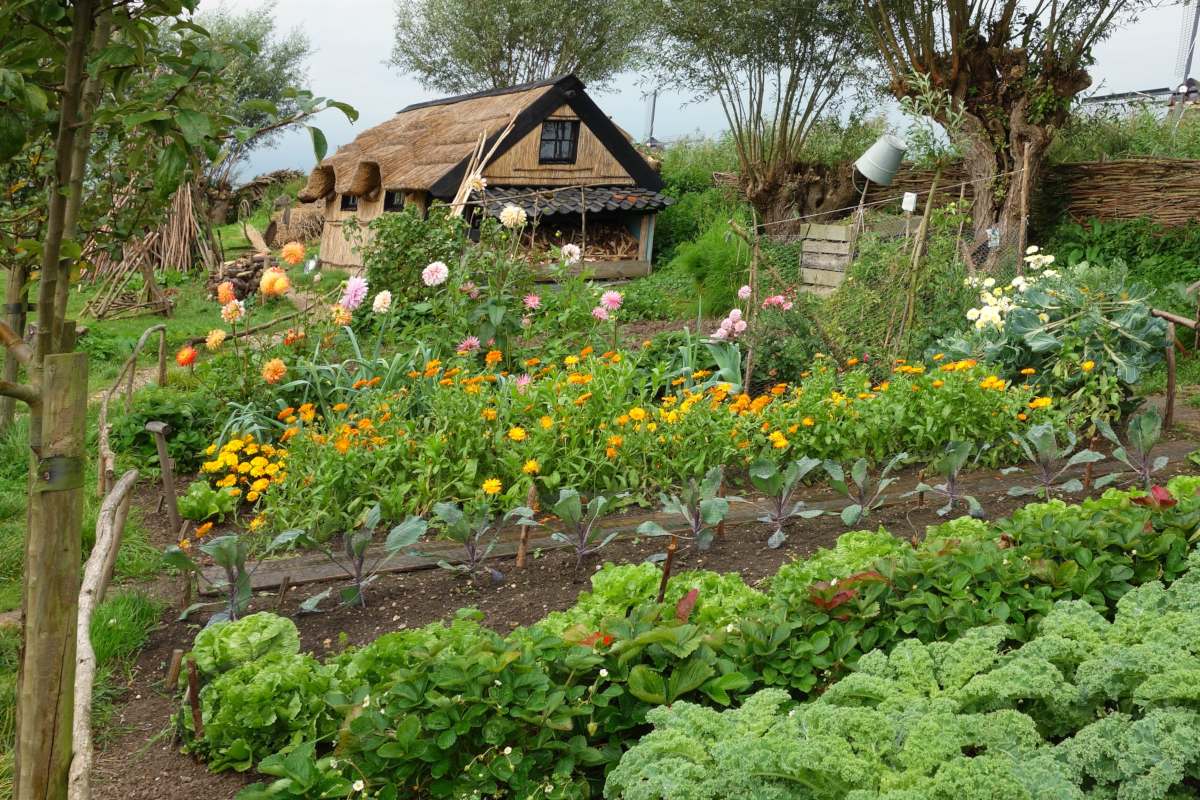
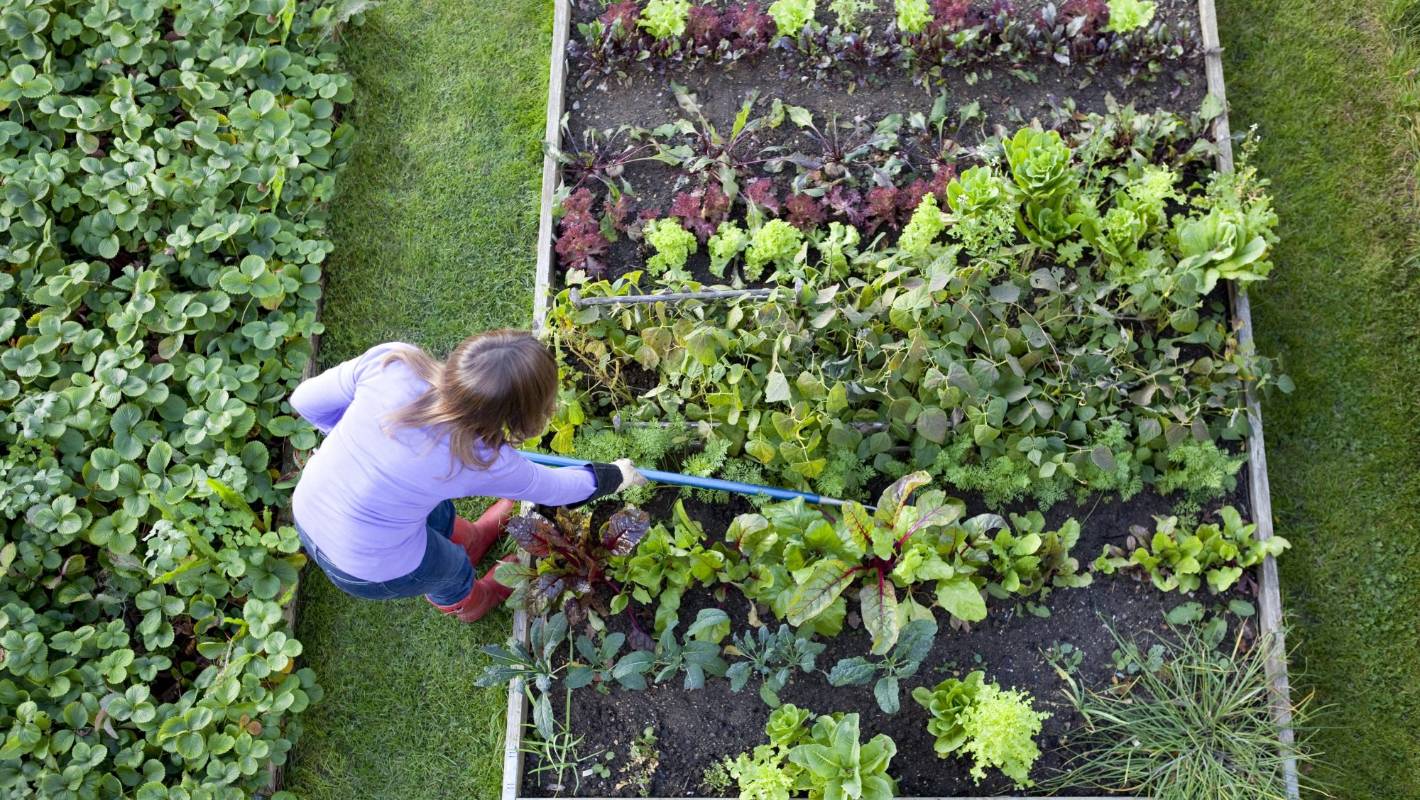
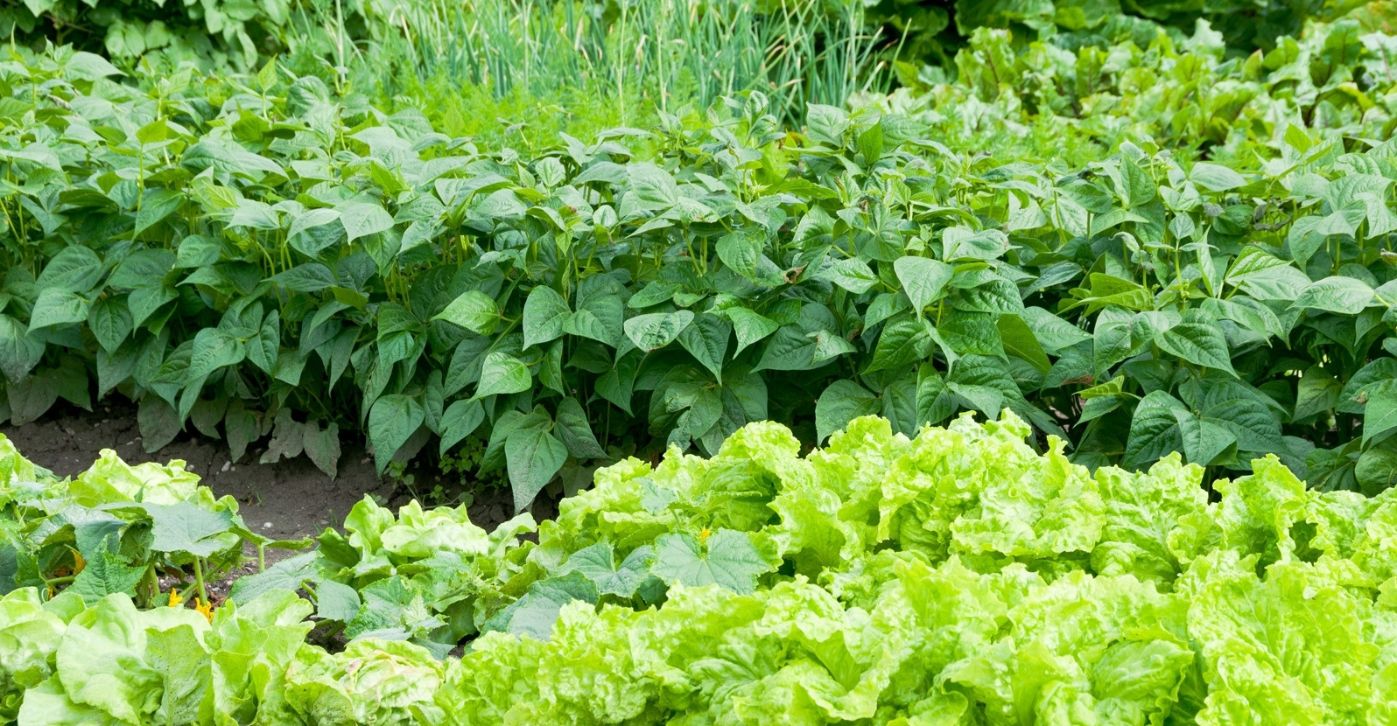

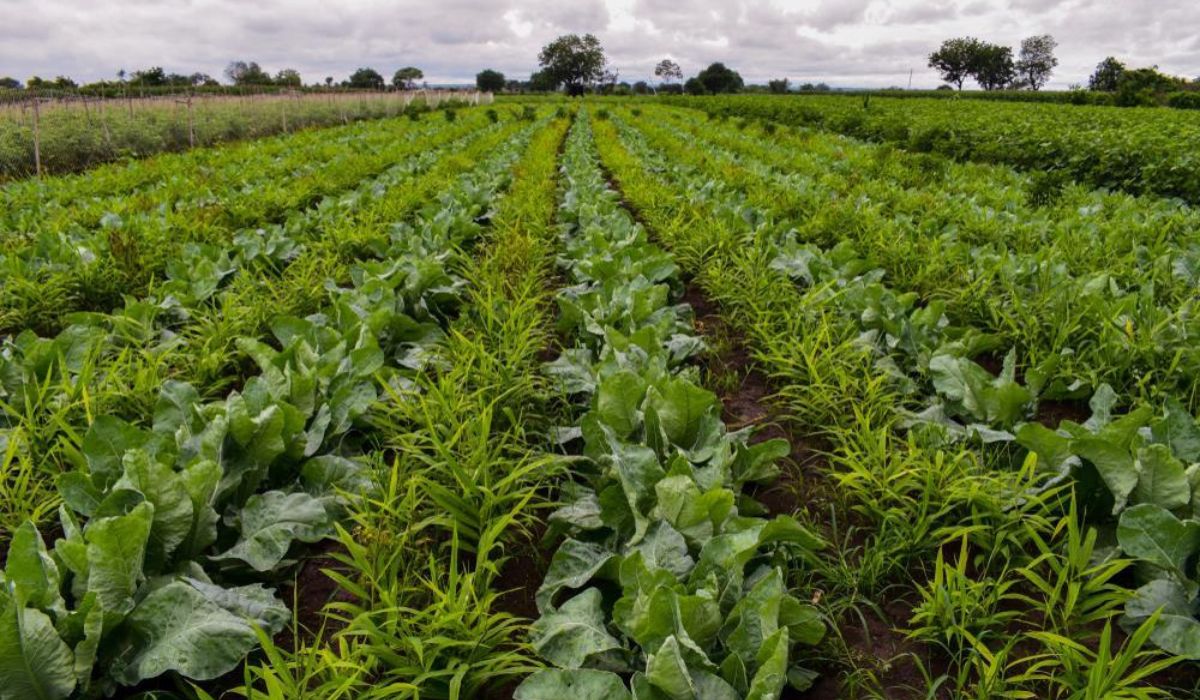

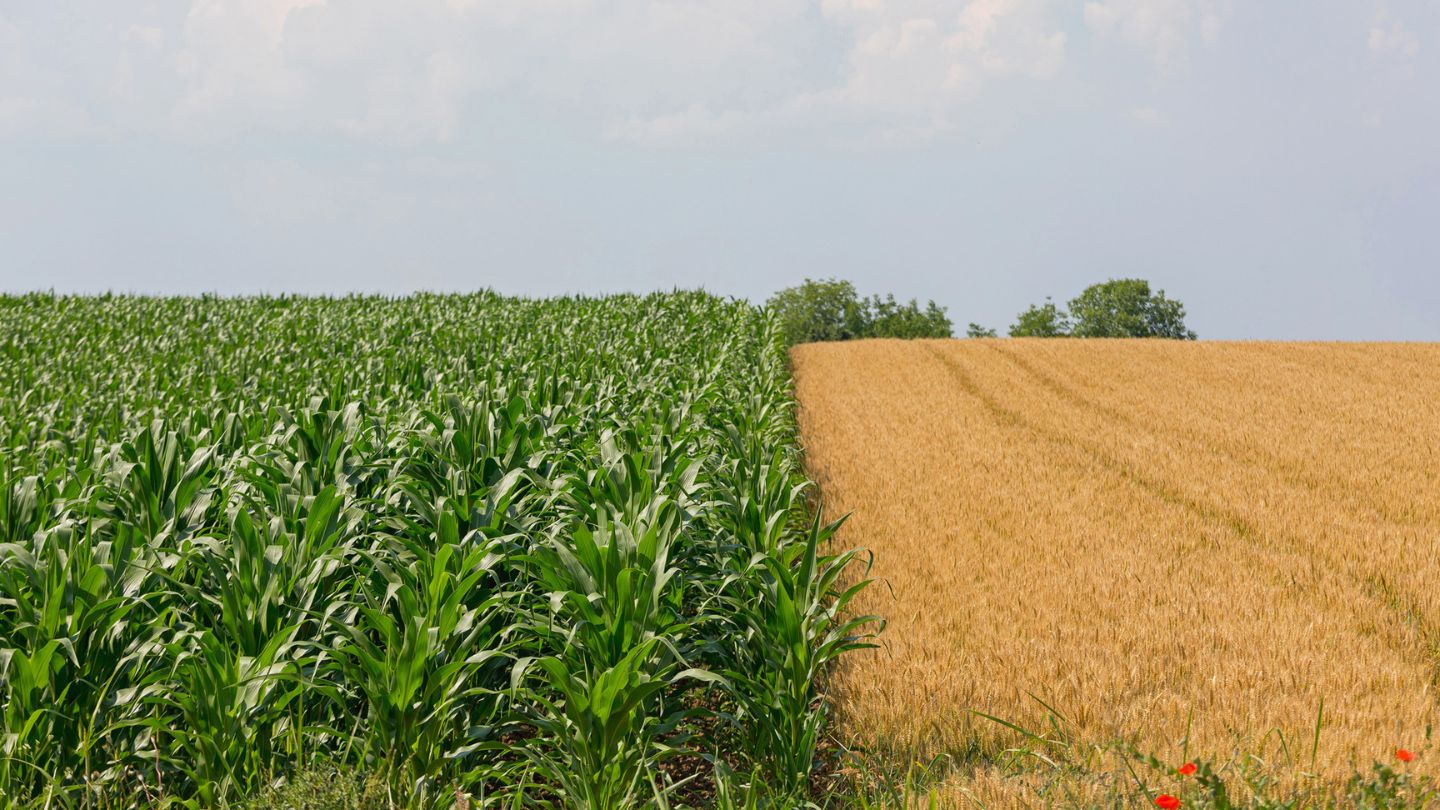
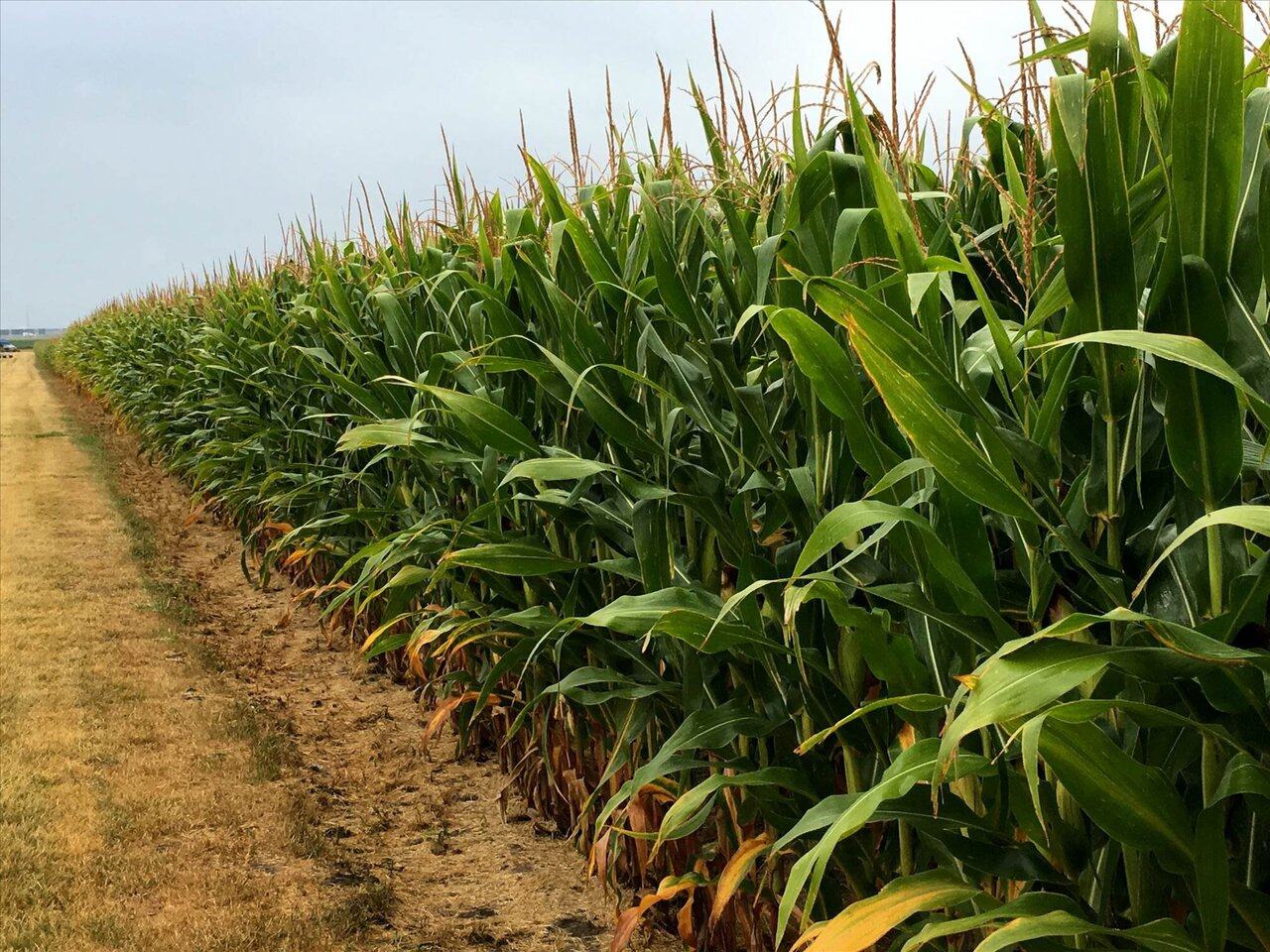
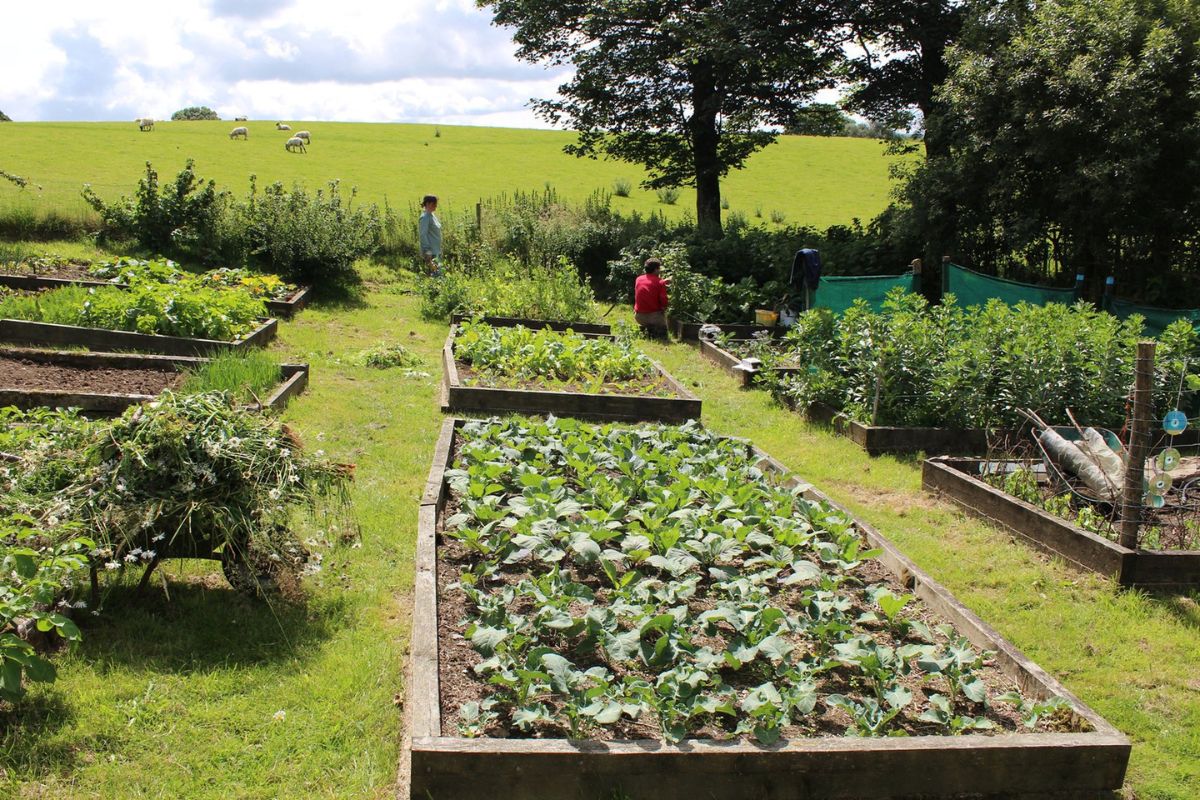
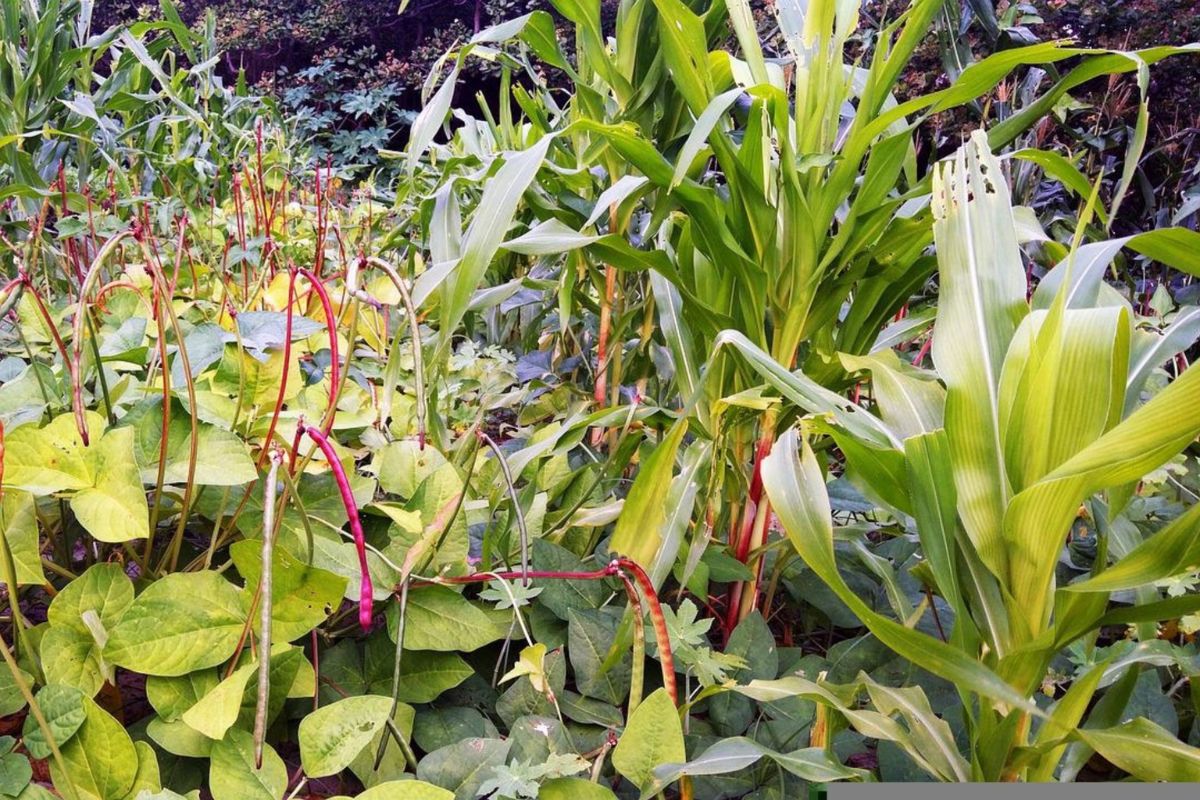
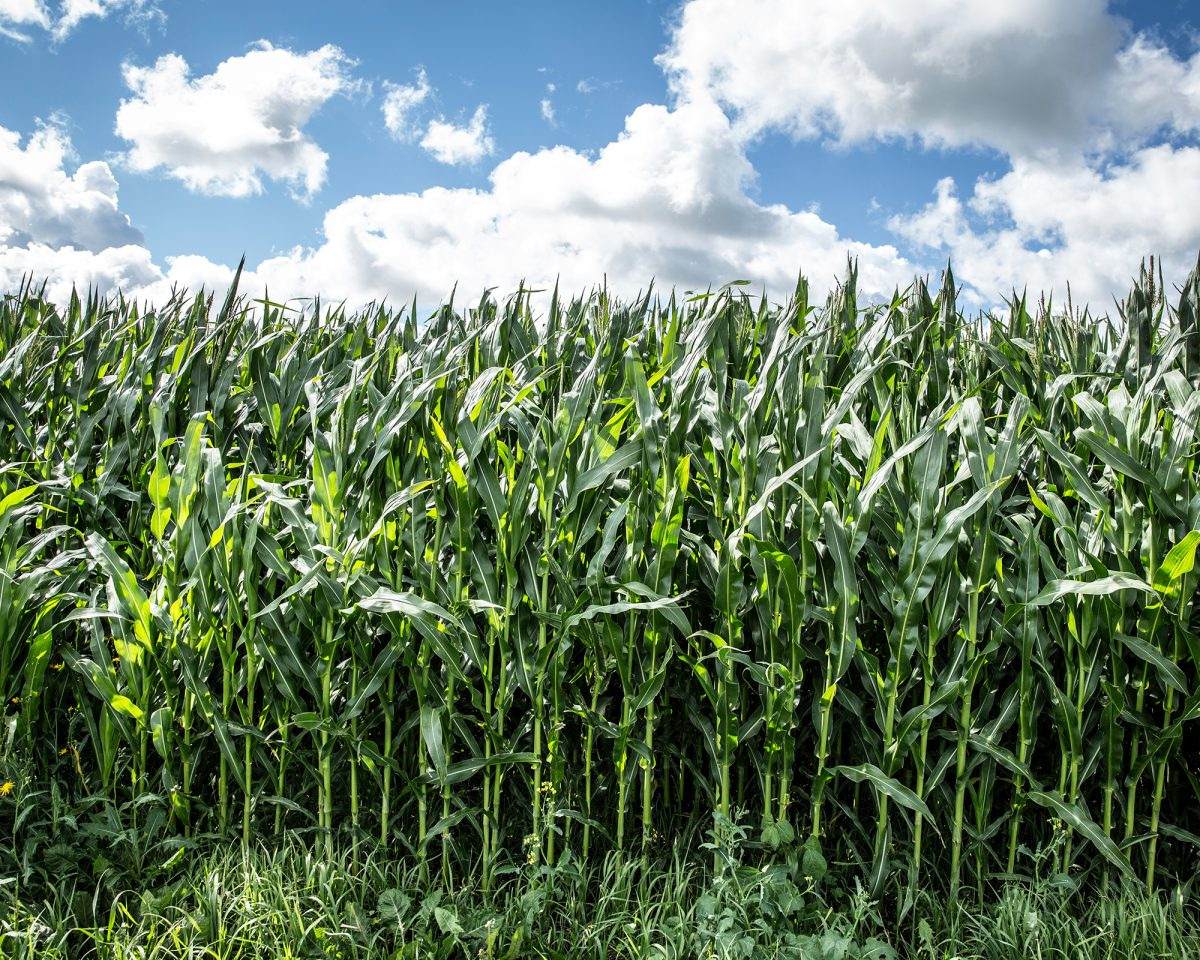

0 thoughts on “How Is Crop Rotation Sustainable”